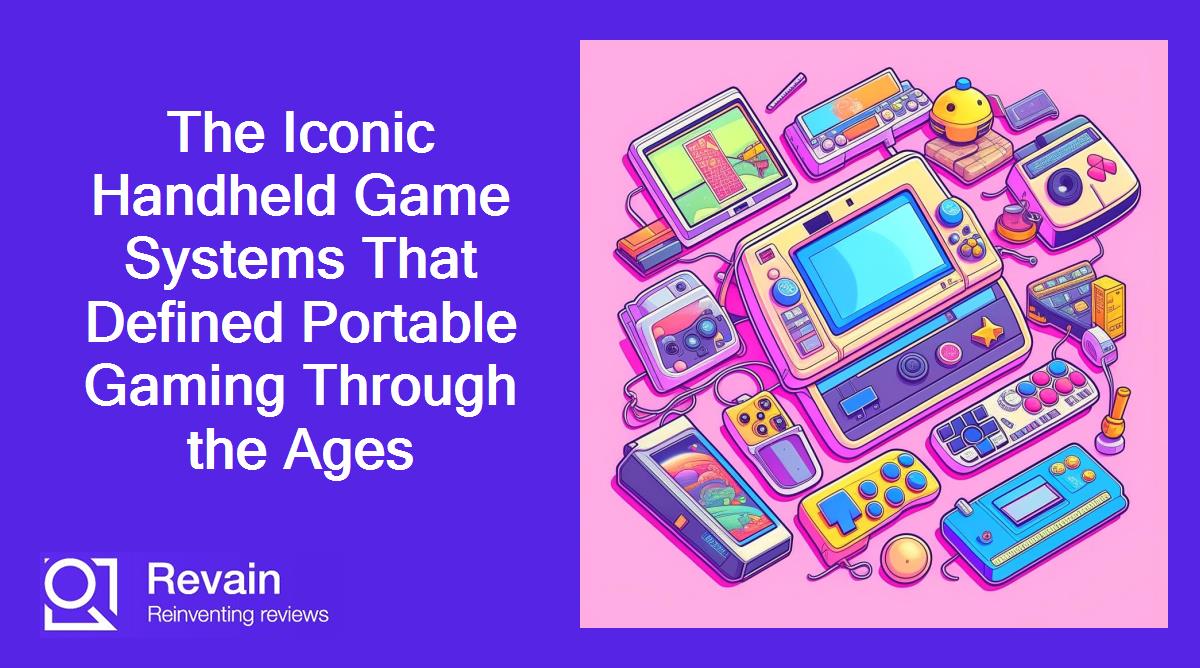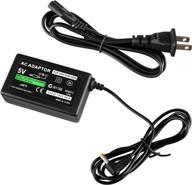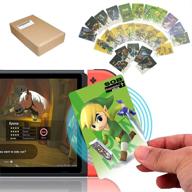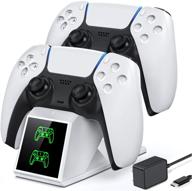The Best Handheld Retro Gaming Systems
Handheld gaming systems have come a long way since the early days of LCD screens and simple button controls. While modern handhelds boast powerful specs and connectivity, there's still something special about the retro portable consoles that many gamers grew up with.
Here are some of the best and most iconic handheld systems for retro gaming:
Top products in 🎮 Handheld Game Systems
Game Boy
The original Game Boy was a revelation when it launched in 1989. Developed by Nintendo, it featured a monochrome LCD screen, an 8-bit processor, and simple controls - but allowed gamers to play great games like Tetris, Super Mario Land, and The Legend of Zelda while on the go. The Game Boy's massive success made it a cultural icon of the early 90s.
Another interesting products
Game Boy Color
The Game Boy Color, released in 1998, took the basic form factor of the original Game Boy and added color visuals. It also featured a faster processor and more memory. Popular Game Boy Color titles included Pokemon Gold/Silver, The Legend of Zelda: Link's Awakening DX, and Super Mario Bros. Deluxe.
Similar products
Game Boy Advance
2001's Game Boy Advance represented a major step forward with a horizontal design, color screen, 32-bit processor, and support for SNES-quality visuals. It could even link up to the GameCube console. Top games included Metroid Fusion, Mario Kart: Super Circuit, and remakes of NES and SNES classics.
Nintendo DS
Nintendo shook up handheld gaming in 2004 with the Nintendo DS and its dual screens (one being a touchscreen). It introduced innovative gameplay concepts with the touch screen and microphone input. The DS boasted powerful specs for the time and an excellent library with games like New Super Mario Bros., Brain Age, and Castlevania: Dawn of Sorrow.
PlayStation Portable
- Sony's PlayStation Portable (PSP) gave the Nintendo handhelds their first real competitor in 2004. The highlights of the PSP were:
- Large, widescreen LCD display with good graphics capabilities.
- Optical media storage using UMD discs.
- Connectivity with PS2 and PS3 consoles.
- The PSP featured strong titles such as God of War: Chains of Olympus, Metal Gear Solid: Peace Walker, and Daxter.
While newer handhelds boast impressive technological advances, these retro portables offer an iconic and accessible style of gaming that still holds up today. Their games are considered classics for good reason.
Game Boy Advance
The Game Boy Advance (GBA) is a 32-bit handheld gaming system released by Nintendo in 2001. It represents a significant evolution from the 8-bit Game Boy and Game Boy Color. With its horizontal design and improved technical abilities, the GBA allowed portable gaming to come closer to matching the quality of home console games.
Technical Specifications
- CPU: 32-bit ARM7TDMI 16.78 MHz processor
- RAM: 256 KB internal and 256 KB external RAM
- Display: 2.9 inch reflective TFT color LCD, 240 x 160 pixel resolution
- Storage: 256 KB SRAM and cartridges up to 32 MB
- Media: ROM cartridges
- Connectivity: Link cable support for multiplayer gaming
These specs were a massive jump over the Game Boy Color's 8-bit processor and limited memory. The GBA could deliver SNES-quality visuals and sound that were closer to early 90s consoles.
Backward Compatibility
Nintendo ensured backward compatibility with the GBA's predecessors. Original Game Boy and Game Boy Color cartridges could be played, although they did not take advantage of the GBA's improved hardware capabilities. The GBA lacked mono audio support, so original Game Boy games required a headphone adapter.
Game Library
The GBA represented a 16-bit 2D powerhouse at the time. It boasted an excellent library mixing original games and remakes:
- Metroid Fusion - A side-scrolling action platformer continuing the Metroid series.
- The Legend of Zelda: The Minish Cap - An original top-down Zelda adventure.
- Mario Kart: Super Circuit - Remake of the SNES classic Mario Kart.
- Final Fantasy VI Advance - Port of Final Fantasy VI with some new content.
Franchises like Castlevania, Fire Emblem, and Harvest Moon also saw excellent GBA entries.
Models
Later hardware revisions of the GBA included:
- Game Boy Advance SP (2003) - Clamshell design with frontlit screen and rechargeable battery.
- Game Boy Micro (2005) - Tiny design with backlit screen aimed at premium portability.
The GBA SP was especially popular, addressing the original GBA's lack of screen lighting and introducing a more compact form factor.
Legacy
Total sales for the Game Boy Advance surpassed 80 million units. It successfully bridged the gap between the simpler 8-bit handhelds of the past and more powerful devices like the Nintendo DS. The GBA delivered an iconic library of games that set a new standard for portable gaming. It showed sophisticated gameplay and visuals could translate to handheld experiences, paving the way for the thriving mobile gaming scene today.
PlayStation Portable
The PlayStation Portable (PSP) is a handheld gaming console developed by Sony as part of the PlayStation brand. Released in 2004, it was Sony's first handheld system and competed with Nintendo's dominant Game Boy Advance and DS handhelds.
Technical Specifications
- CPU: MIPS R4000 32-bit at 1-333 MHz
- RAM: 32 MB main and 4 MB embedded DRAM
- Display: 4.3 inch TFT LCD, 480 x 272 pixel resolution
- Storage: Memory Stick Duo and UMD optical discs
- Media: UMD discs up to 1.8 GB
- Connectivity: WiFi and Ad Hoc multiplayer
The PSP delivered exceptional handheld graphics capabilities for the time, approaching early PlayStation 2 quality in a portable form factor. The use of optical UMD discs also allowed for much greater game storage than cartridges.
Controls and Design
The PSP introduced a number of innovations:
- Large 4.3 inch 16:9 widescreen display
- Analog nub "joystick" for dual analog control
- Wifi connectivity for internet access and online play
- Multimedia capabilities for music, video, and photos
Its controls and multimedia features made it stand out from typical handheld gaming devices. The PSP had a sleek, black design that really demonstrated it as a high-end system.
Game Library
Strong entries in popular PlayStation franchises helped drive the PSP's game lineup:
- God of War: Chains of Olympus
- Metal Gear Solid: Peace Walker
- Gran Turismo
- LittleBigPlanet
- Final Fantasy Crisis Core
There were also exciting new IP like LocoRoco and Patapon. The PSP became known for cinematic, high-quality action games.
Models
Later PSP models included:
- PSP 2000 (2007) - Lighter design with TV output support
- PSP 3000 (2008) - Better screen and built-in mic
- PSP Go (2009) - Digital-only model with slide-out controls
These kept the PSP relevant with incremental updates. PSP Go's lack of UMD drove controversy however.
Legacy
The PSP ultimately sold over 80 million units worldwide during its lifespan, a solid success though below DS levels. It pioneered console-quality portable gaming and multimedia functions. While not reaching DS popularity, the PSP delivered a landmark system for Sony's handheld gaming efforts.
Must-Have Handhelds for Retro Gamers
For gamers who want to relive classic portable titles or experience them for the first time, certain handhelds stand out as must-haves. These systems offer great libraries of retro games in their original format.
Game Boy Advance SP
The Game Boy Advance SP improves upon the original GBA model with a clamshell design and frontlit screen. It can play the entire library of Game Boy, Game Boy Color, and Game Boy Advance titles. Highlights include:
- Metroid Fusion and Zero Mission
- Pokemon FireRed/LeafGreen
- Classic NES and SNES ports
- Castlevania: Aria of Sorrow
The SP's compact form factor and screen make it an ideal way to experience classic portable games.
Nintendo DS Lite
While not strictly retro, the DS Lite can play Game Boy Advance games through its cartridge slot. It improves upon the original DS with a slimmer, lighter design. As a bonus, it can also play all Nintendo DS titles. Great for:
- 2D Metroid games
- Castlevania titles
- Final Fantasy Tactics Advance
- Pokemon Generation 3 games
PlayStation Vita
Through digital downloads, the PlayStation Vita provides access to titles from PlayStation 1, PSP, and more. Its OLED screen makes PS1 games look great. It offers:
- Original PlayStation classics like Final Fantasy VII
- PSP series entries such as Metal Gear Solid: Peace Walker
- Retro compilations and mini collections
Nintendo 3DS
Via its Virtual Console, the 3DS can download Game Boy, Game Boy Color, Game Gear, and other retro portable titles. Exclusive 3D effects breathe new life into classics like:
- The Legend of Zelda: Link's Awakening DX
- Pokemon Red/Blue/Yellow
- Kirby's Dream Land
The New 3DS even has SNES Virtual Console support.
Game Boy Micro
While not as versatile as the SP, the Game Boy Micro is a premium, ultra-portable way to play Game Boy Advance games. Its tiny form factor makes it a great pocket companion. It shines with:
- 2D Castlevania and Metroid games
- Fire Emblem series
- Stealth action like Metal Gear Solid
For retro gaming on the go, these handhelds offer the perfect blend of portability, library, and classic gameplay.
Game Boy Advance SP
The Game Boy Advance SP (GBA SP) is a redesign of the original Game Boy Advance handheld. Released by Nintendo in 2003, it featured a revolutionary clamshell design and improved technical features.
Clamshell Design
The GBA SP introduced a bold new look:
- Small horizontal clamshell with top and bottom shell
- More portable and compact when closed
- Protected screen and controls when closed
- Side power switch instead of top-mounted
This innovative industrial design made the GBA SP much more portable than its predecessors. It could easily fit into a pocket when shut.
Displays
The GBA SP included several display enhancements:
- Backlit screen for play in any lighting
- Redesigned larger LCD display
- Adjustable brightness control
Previous GBAs had reflective LCD screens requiring external light sources. The SP's backlight enabled easy play day or night.
Technical Specs
- CPU: 32-bit 16.8 MHz ARM7TDMI processor
- RAM: 256 KB internal and 256 KB external RAM
- Resolution: 240 x 160 pixels
- Storage: 256 KB SRAM, up to 32 MB game cartridges
Aside from the display, the GBA SP had the same capable innards as the original GBA model. It could play any Game Boy Advance title.
Controls
The button controls remained the same as the GBA:
- A/B face buttons
- Directional pad
- Left and right shoulder buttons
- Start and Select buttons
The horizontal form factor gave the SP a different feel for controls, but didn't affect gameplay.
Battery Life
With a lithium-ion rechargeable battery, the GBA SP improved portability:
- 10-18 hours of gameplay per charge
- Recharged via included AC adapter
- Later models added a brighter backlight at expense of battery life
The GBA had relied on AA batteries. The rechargeable SP battery enabled long play sessions without battery swaps.
Legacy
Over 23 million GBA SP units were sold. Its redesigned form factor and features reinvigorated the GBA platform. To this day, it remains a beloved system for playing classic portable games due to its design and game catalog.
What is the use of Amazon Prime for a regular buyer of "Handheld Game Systems"?
For those who regularly purchase handheld gaming devices like the Nintendo Switch, Steam Deck, or retro portables, an Amazon Prime membership can provide some useful benefits.
Free Fast Shipping
One of the biggest perks with Prime is free two-day shipping on most items. For handheld gamers, this means being able to get your console or games delivered quickly without paying extra shipping fees.
Pre-Order Access
When new handhelds are announced, they often become available for pre-order for Prime members first. This makes it easier to secure the latest devices like special edition Switch models before they sell out.
Release Date Delivery
Prime members can select release date delivery when pre-ordering games. This ensures you get new titles on their official release date so you can start playing right away.
Prime Day Deals
Amazon's Prime Day event exclusively offers deals and discounts for Prime subscribers. There are often good sales on handhelds, games, accessories, and more during Prime Day.
Twitch Prime Loot
Included with Prime is a free Twitch Prime subscription which provides free loot each month for various games. This can include items and currency for handheld/mobile games.
Overall, the shipping benefits, pre-order access, exclusive deals, and other perks make Amazon Prime a good complement for frequent buyers of handheld gaming devices and games.
"Top 6 Handheld Game Systems For Retro Gaming"
Here are the top 6 handheld game systems for retro gaming:
- Anbernic RG353M - Best Retro Handheld For Build Quality
- Analogue Pocket - Best Retro Handheld For Game Boy Fans
- Retroid Pocket 2S - Best Retro Handheld Under $100
- RG405M - Best Affordable Handheld
- Steam Deck - The Ultimate Handheld Retro Emulator
- Miyoo Mini - Best Retro Handheld for Emulation
These handheld game systems offer a range of features and capabilities, from playing original game cartridges to using emulation to run old games. Some of them are compatible with a wide range of retro consoles, while others are more specialized for specific systems. Whether you're a collector, a retro gaming enthusiast, or just looking for a fun way to play classic games on the go, there's a handheld game system on this list that's perfect for you.
What Are The Differences Between The Anbernic RG353M And The Anbernic RG351P??
The Anbernic RG353M and the Anbernic RG351P are both handheld game systems designed for retro gaming. Here are the main differences between the two:
Anbernic RG353M:
Anbernic RG351P:
Overall, the RG353M is considered to have better build quality and features, while the RG351P is a more affordable option that still offers decent retro gaming capabilities.
Anbernic RG353M Games List
There are several sources that provide a list of games for the Anbernic RG353M. Here are some of the games that are mentioned across these sources:
It's worth noting that the Anbernic RG353M is capable of running a wide range of retro games from various consoles and platforms, thanks to its emulation capabilities. The exact list of games that can be played on the device may vary depending on the specific emulator and settings used. Additionally, users can add their own games to the device by transferring ROMs to the internal storage or a microSD card.

















